The Best Home Air Quality Monitor
- Updated: July 23, 2025
Table of Contents
Whether you’re concerned about your family’s health, managing allergies, or simply want to ensure a healthy living environment, a reliable Home Air Quality Monitor is an essential tool for modern homes.
We spend approximately 90% of our time indoors. Understanding and maintaining good indoor air quality has never been more crucial.
Everything we recommend
Best Overall
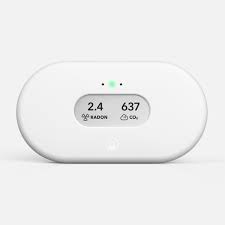
- All major pollutants
- Excellent app interface
- Long battery life
Best for Allergies

- Medical-grade sensors
- Pollen monitoring
- Historical data tracking
The Best Home Air Quality Monitor
Why Air Quality Monitoring Matters
Poor indoor air quality can lead to both immediate and long-term health effects.
Short-term exposure to pollutants may cause headaches, dizziness, fatigue, and irritation of the eyes, nose, and throat.
Long-term exposure can result in respiratory diseases, heart disease, and even cancer.
For sensitive groups like children, elderly people, or those with asthma or allergies, the impacts can be even more severe.
Real-world example: Sarah Thompson, a mother of two in Boston, noticed her children’s allergies worsening during winter months.
After installing an air quality monitor, she discovered elevated levels of PM2.5 particles whenever she used her fireplace, allowing her to make informed decisions about ventilation and usage.
Understanding Different Types of Pollutants
Modern air quality monitors can detect various pollutants, each affecting your health differently:
Particulate Matter (PM2.5 and PM10)
- PM2.5: Fine particles from smoke, vehicle emissions, and cooking
- PM10: Larger particles like dust, pollen, and mold spores
Volatile Organic Compounds (VOCs)
- Sources: Paint, cleaning supplies, furniture, building materials
- Health impacts: Eye irritation, headaches, liver damage
Carbon Dioxide (CO2)
- Indicates ventilation adequacy
- High levels can cause drowsiness and poor concentration
Carbon Monoxide (CO)
- Deadly gas from combustion
- Essential to monitor if you have gas appliances
Temperature and Humidity
- Affects comfort and mold growth potential
How to Interpret Readings
Understanding your monitor’s readings is crucial for taking appropriate action:
PM2.5 Levels (μg/m³)
- 0-12: Good
- 12-35: Moderate
- 35-55: Unhealthy for sensitive groups
- 55+: Unhealthy
CO2 Levels (ppm)
- <800: Excellent
- 800-1000: Good
- 1000-2000: Poor
- > 2000: Dangerous
VOC Levels (ppb)
- <220: Good
- 220-660: Moderate
- 660-2000: Poor
- > 2000: Dangerous
Tips for Improving Indoor Air Quality
Based on your monitor’s readings, here are effective ways to improve your air quality:
Ventilation Strategies
- Open windows during low pollution times
- Use exhaust fans while cooking
- Consider a whole-house ventilation system
Source Control
- Switch to natural cleaning products
- Remove shoes at the door
- Keep pets groomed
Air Purification
- Use HEPA air purifiers in key rooms
- Replace HVAC filters regularly
- Consider adding plants known for air purification
Humidity Control
- Maintain levels between 30-50%
- Use dehumidifiers in damp areas
- Fix any water leaks promptly
Special Considerations
For Families with Babies
Choose monitors with low noise levels and night modes.
The Airthings View Plus is particularly good for nurseries due to its silent operation and comprehensive monitoring.
For Pet Owners
Look for monitors that can detect dander and have removable filters. The IQAir AirVisual Pro excels in this category.
For Allergy Sufferers
Focus on monitors with high-accuracy pollen and particle detection. Consider creating a clean room with filtered air for severe days.
Regular Maintenance and Updates
To ensure accurate readings:
- Calibrate sensors according to manufacturer instructions
- Clean or replace filters as recommended
- Update firmware regularly
- Check battery levels monthly
Top Air Quality Monitors Compared


Pros:
- Measures all major pollutants
- Excellent app interface
- Long battery life
Cons:
- Higher price point
- No display for all metrics simultaneously
Real user review: “After six months of use, the Airthings has helped me identify several issues, including a minor gas leak from our stove.
The battery life is impressive – still at 80% after constant use.” – Mike Chen, Vermont
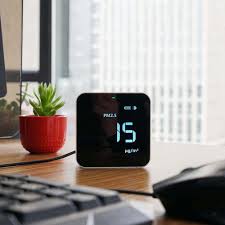
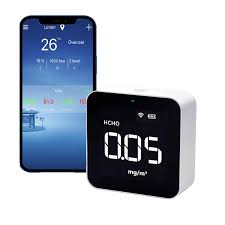
Pros:
- Affordable
- Portable
- Quick readings
Cons:
- Limited to PM2.5 and TVOC
- No smart home integration

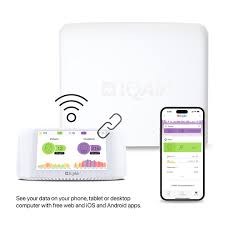
Pros:
- Medical-grade sensors
- Excellent for pollen monitoring
- Historical data tracking
Cons:
- Bulky design
- Requires regular calibration
Conclusion
Investing in a home air quality monitor is a crucial step toward maintaining a healthy indoor environment.
While the Airthings View Plus stands out as our top overall pick, the best choice depends on your specific needs and budget.
Remember that monitoring is just the first step – taking action based on the readings is what truly makes a difference in your indoor air quality.
Stay informed about your air quality, and don’t hesitate to consult with HVAC professionals or air quality experts if you consistently see concerning readings.
Your health and the health of your loved ones are worth the investment in clean air.
[Note: Prices and features mentioned are current as of early 2024. Check manufacturer websites for the most up-to-date information.]
Smart Home Energy Solutions
Note 1: This article contains affiliate links. We may earn a commission for purchases made through these links at no additional cost to you.
Note 2: Amazon.com and its affiliates own the trademarks Amazon and the Amazon logo.
Related Articles

Getting Started with Smart Home Automation: A Beginner’s Guide
Smart home technology has revolutionized how we interact with our living spaces, offering convenience, energy efficiency, and enhanced security. Whether

Smart Home Security: Protecting Your Connected Home Without Compromising Privacy
Smart home security has become more than just installing a few cameras – it’s about creating a comprehensive system that

How Smart Home Technology Will Change Lives
The idea of “home” is evolving. Modern homes are becoming into “smart homes”—intelligent spaces that adjust to our requirements, improve
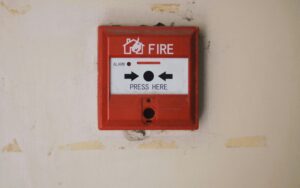
Smart Fire Detection Systems: Protecting Your Home with Modern Technology
Smart Fire Detection Systems now integrate multiple sensors, smart technologies, and air quality monitoring to provide comprehensive protection for your

Best Water Conservation Smart Devices for Your Home
Water Conservation Smart Devices can help you save money while protecting the environment. Our comprehensive guide reviews the most effective

10 Best Smart Noise Cancelling Devices for Peaceful Homes
Smart Noise Cancelling Devices can transform any space into a peaceful sanctuary. We’ve reviewed the best sound machines and ambient noise

6 Smart Home Solutions that Provide Seniors with Peace of Mind
Table of Contents Smart Home Solutions for Seniors provides cutting-edge solutions that can help seniors live confidently in their homes

The Best Home Air Quality Monitor
Table of Contents Whether you’re concerned about your family’s health, managing allergies, or simply want to ensure a healthy living

The Future of Solar Water Heaters for Homes
Solar Water Heaters for Homes are becoming a more appealing alternative for homes as energy costs climb and environmental awareness

Soundproofing Brands for Residential Areas
The residential soundproofing market has emerged as a sophisticated solution for homeowners seeking to create more controlled and peaceful acoustic

The 5 Best Soundproofing Panels
Soundproofing panels have become an increasingly essential solution for individuals seeking to manage acoustic environments in both residential and professional

The Best Water Heater Controllers
Everything we recommend Best Seller Tricklestar Buying Options Remote controlled smartphone Compatible with Alexa and Google Multiple fabric color and

The Best Automated Smart Blinds and Shades
Everything we recommend Best Seller / Overall Pick Graywind Buying Options Remote controlled smartphone Compatible with Alexa and Google Multiple

The 4 Best Smart Water Monitoring
Everything we recommend Best Seller / Overall Pick Govee WiFi-enabled devices leverage multiple sensors and intelligent connectivity to monitor critical

The 6 Best Air Purifiers for Home
Air Purifiers for Home have emerged as an increasingly important household device for improving indoor air quality and addressing growing
Future Home Pro
Elevate your home, transform your life
Copyright © 2024 Future Home Pro | all rights reserved